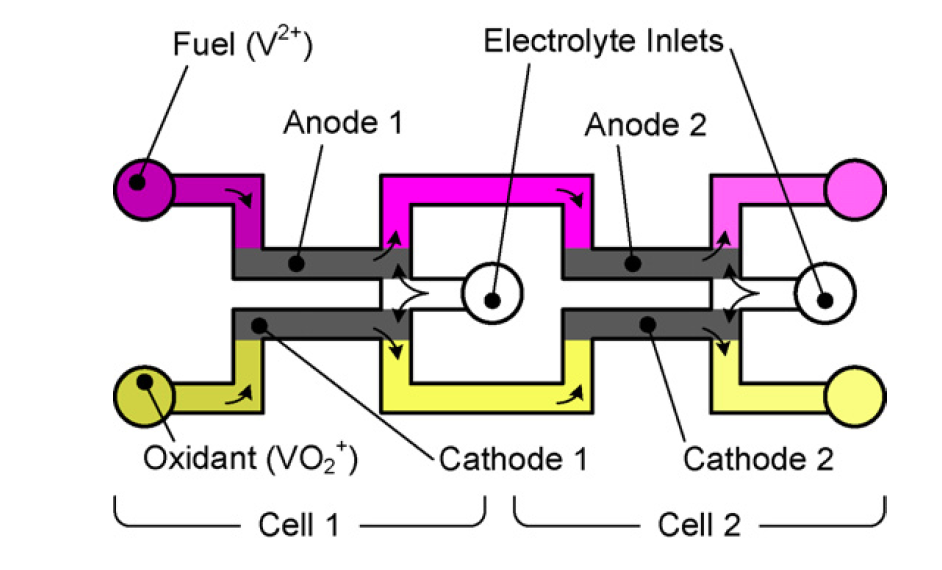The M.J. Murdock Diagnostics Foundry for Translational Research is now live. More information can be found here:
https://eih.uw.edu/murdockThe UW President selects one student from each class based on their GPAs, rigor of classes, numbers of Honors courses and interdisciplinary research in the honors track. This year, Catherine Chia was awarded the Freshman Medal. Catherine Chia studies biochemistry, neuroscience and anthropology and conducts research in our lab on the development of a point-of-care test for hepatitis C. We are so honored to work with Catherine and proud of her recognition.
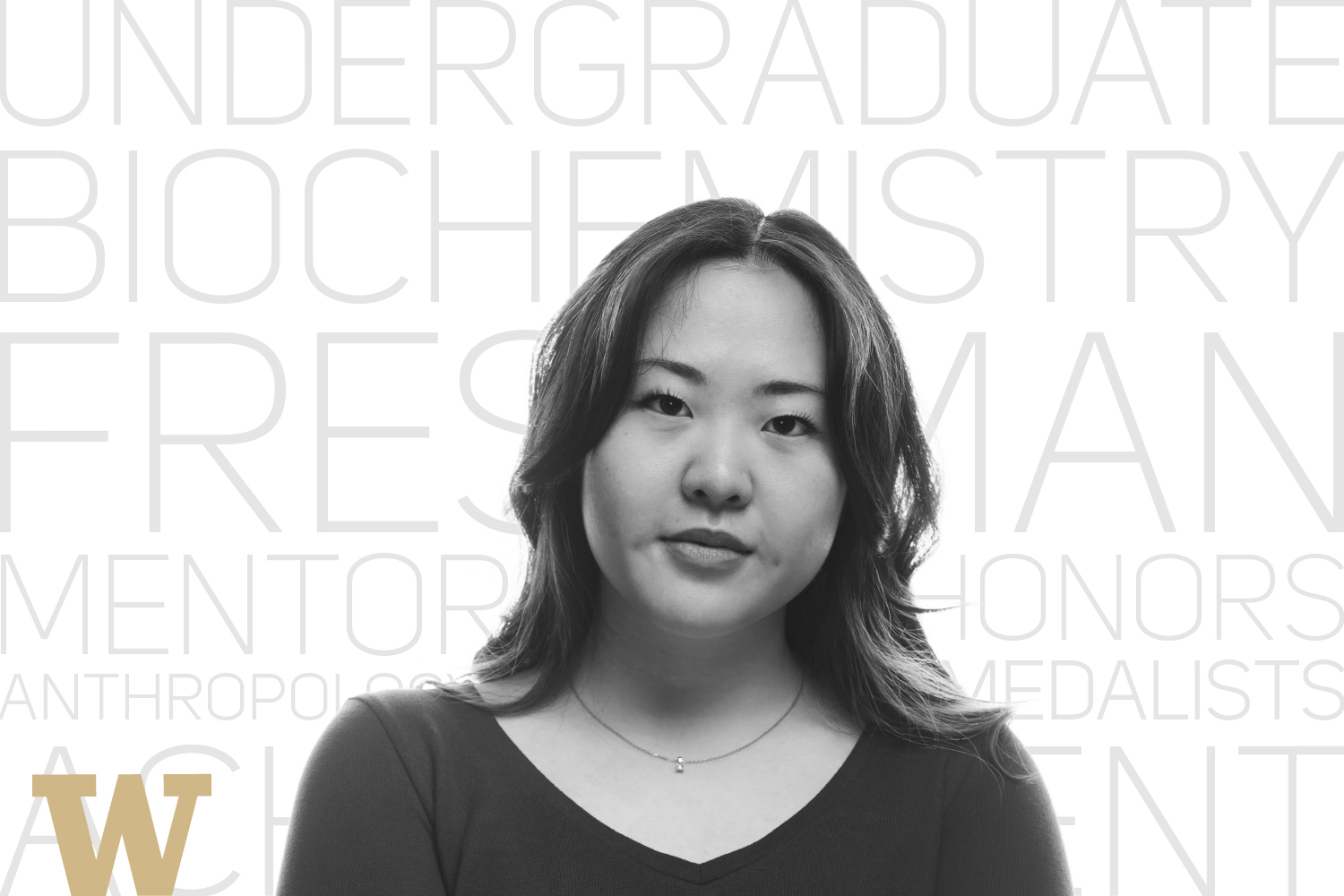
We are recruiting two postdoctoral scholars to work on projects developing drug adherence assays (
https://engineering.academickeys.com/seeker_job_display.php?dothis=display&job%5BIDX%5D=150862&override=1) and soft robotic tactile sensors (
https://engineering.academickeys.com/seeker_job_display.php?dothis=display&job[IDX]=151345). These positions are available immediately. Please email Jonathan Posner ( jposner[a]uw.edu ) with your interest.
Ben Sullivan has led the development of an integrated paper microfluidic device that purifies nucleic acids from whole blood using on-chip digestion and isotachophoretic nucleic acid purfification.
Read more at:
https://www.sciencedirect.com/science/article/abs/pii/S1570023220313702Cole Martin joined our lab as a PhD Student in Chemical Engineering. Welcome Cole!
The University of Washington (UW) in Seattle, Washington seeks to fill a full-time postdoctoral research associate position. The proposed position focuses on the development and translation to clinical care of a near-patient assay for measuring antiretroviral drug concentrations indicative of long-term adherence to HIV pre-exposure prophylaxis (PrEP). The successful candidate will work in the Posner research group, will have an appointment in either the Departments of Mechanical Engineering or Chemical Engineering, and will work closely with our project collaborators at UW Departments of Global Health, Epidemiology, Medicine, and Lab Medicine at the Harborview Medical Center and the UW/Fred Hutch Center for Aids Research.
This NIH funded project focuses on the development, validation, and pilot evaluation of a near-patient, objective assay for measuring adherence to PrEP. Oral PrEP is highly effective for preventing HIV acquisition, but PrEP efficacy requires adequate drug adherence (≥4 doses/week). In several trials and implementation studies, PrEP clients have had difficulties maintaining adequate adherence and persistence, and monitoring their PrEP use has proven challenging. PrEP providers have relied on self-reported adherence, which is often inaccurate and unreliable. The lack of an objective, near-patient PrEP adherence monitoring tool has led to inefficient counseling and poor supportive care. To address this need, we recently developed the REverSe TRanscrIptase Chain Termination (RESTRICT) assay, a novel enzymatic assay that semi-quantitatively measures antiretroviral drug concentrations by assessing inhibition of HIV reverse transcriptase, which is the cellular target of oral PrEP drugs. For more details, see https://doi.org/10.1021/acssensors.9b02198
We seek a postdoctoral scientist seeking to conduct translational research to measure drug concentrations in whole blood of PrEP clients using the RESTRICT assay, validate the assay to meet Clinical Laboratory Improvement Amendments (CLIA) requirements, and conduct a feasibility and acceptability study among PrEP clients and providers in Seattle. The project is experimentally intensive and involves the development and optimization of molecular assays. Successful candidates will have a passion for technical solutions to challenges in global health and demonstrated experience in any of the following areas: point of care diagnostics, nucleic acid assays, enzymatic assays, sample preparation, and biochemistry. A PhD in engineering, chemistry, physics, biology, or related field is required. Candidates should have published in peer-reviewed publications, work well in a team, and have strong communication skills.
Application Instructions
To apply, please send electronically a cover letter, a CV, and the names and contact information for three references to Jonathan Posner at jposner@uw.edu. We are building a culturally diverse group and encourage applications from women and minority candidates, individuals with disabilities, and people from other underrepresented or minoritized groups.
Equal Opportunity Statement
The University of Washington is an affirmative action, equal opportunity employer. All qualified applicants will receive consideration for employment without regard to race, color, creed, religion, national origin, sex, sexual orientation, marital status, pregnancy, genetic information, gender identity or expression, age, disability, or protected veteran status.
About University of Washington
The University of Washington is in Seattle, Washington. UW is one of the world’s preeminent public universities, ranking No. 14 in the world on the 2018 Academic Ranking of world universities. Over the past several years, UW has been the top federally funded research institution in the US and recognized as the most innovative public university in the world (Reuters). Seattle is home to some of the largest international companies, including Microsoft, Amazon, Boeing, and Starbucks. It is a vibrant metropolitan city that is progressive, has great food, culture, and is friendly to biking. In 2019, it was ranked as one of the top ten cities to live (US News). Just outside the city there is endless natural beauty of fresh water lakes, Puget Sound and it’s hundreds of islands, and large number of mountains for hiking and skiing.
Alicia Gim and Yonas Meshesha were awarded a
Washington Research Foundation fellowships for their research projects focusing on the RESTRICT assay for objective measurement of antiretroviral drug adherence.
Congratulations Alicia and Yonas!
Thanks to a unique and innovative Washington partnership, first responders have a new tool for the pandemic. Stations across the region have begun receiving University of Washington-designed, locally manufactured systems to decontaminate the high-demand face masks needed to protect them from COVID-19 while carrying out their essential duties. See the entire story
here.
Ben Sullivan participated in the design of the UV decontamination boxes and lead the dosimetry validation. Dr. Posner founded and now directs the Engineering Innovation in Health program where Ben and Jonathan first worked together. Learn more about Engineering Innovation in Health,
here.
Andrew Bender defended his PhD thesis titled Sample Preparation for Point-of-Care Nucleic Acid Amplification Testing of Bloodborne Viruses.
Congratulations Dr Bender!
Jonathan Posner was recently named Mechanical Engineerings Richard and Victoria Harrington Professor for Engineering Innovation in Health. He directs the
Engineering Innovation in Health (EIH) program for the UW. Entering its eighth year, EIH has become a rallying point for connecting health care experts with problem-solving engineering students and faculty.
Our paper describing the
REver
Se
TRanscr
Iptase
Chain
Termination (
RESTRICT) assay for measuring antiretroviral drug levels was
recently published in ACS Sensors!
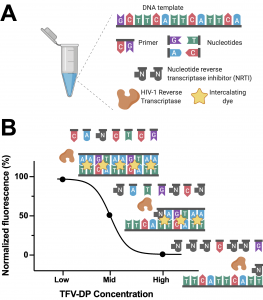
The RESTRICT assay is inspired by the mechanism of action of antiretroviral drugs and infers drugs levels from the extent of DNA synthesis by HIV reverse transcriptase enzyme (see figure above). RESTRICT is a user-friendly and inexpensive way for rapid (< 1 hour) measurement of long-term drug levels for people receiving medication for HIV treatment or prevention. The RESTRICT assay could be a useful for patients and healthcare providers to measure drug levels during a typical visit and receive feedback that might help to prevent treatment failure.
The manuscript is now available online on the ACS Sensors webpage here:
https://doi.org/10.1021/acssensors.9b02198. A PDF is also available on our publications page here:
http://posner.uw.edu/publications/.Arif Abdullah joined our lab as a postdoctoral scholar. He will work on on Soft MEMS Tactile Sensors. This project focuses on the development of an instrumented hand for inspection and handling of sensitive devices such as explosives. This project will enable next-generation tactile sensing and interaction of objects, both visible and hidden, for robot operators to locate, identify, and neutralize objects and threats on land and in the sea. Welcome Arif!
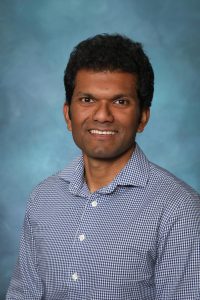
David Juergens was awarded an Honorable Mention selection in the NSF Graduate Research Fellowship Program. Among over 12,000 highly competitive applicants, David was selected as a top tier student with enormous potential to become a scientific leader and advocate. Congrats!
The University of Washington in Seattle, Washington seeks to fill a full-time post-doctoral research associate position. The position focuses on the development of soft MEMS tactile sensing skin using liquid metal strain gauges that can sense both dynamic normal and shear forces for increasing the perceptual abilities of robotic manipulators in highly sensitive environments. The successful candidate will work in Jonathan Posner’s research group, will have an appointment in either the Departments of Mechanical Engineering or Chemical Engineering, and will work closely with our project collaborators at the UCLA Biomechatronics Lab and RE2 Robotics.
This project focuses on the development of an instrumented hand for inspection and handling of sensitive devices such as explosives. This project will enable next-generation tactile sensing and interaction of objects, both visible and hidden, for robot operators to locate, identify, and neutralize objects and threats on land and in the sea. The research is experimentally intensive and involves the construction of robust microfluidic liquid metal sensors. Successful candidates will have demonstrated experience in some of the following areas: microfluidics, tactile sensors, strain gauges, clean room processes, data acquisition, mechanical/electromagnetic computational modelling, packaging for sensors for use underwater. A PhD in engineering, physics, or related field is required. Candidates should have published in peer-reviewed publications, work well in a team, and have strong communication skills.
To apply, please send electronically a cover letter, a CV, and the names and contact information for three references to Jonathan Posner at jposner[at]uw.edu.
EEO/AA Policy
The University of Washington is an affirmative action, equal opportunity employer
Jay Rutherford passed his PhD General Exam in the Mechanical Engineering department making him officially a PhD candidate. Excellent work, Jay! Next stop -- thesis defence!
Ayo Olanrewaju joins the group as a postdoctoral scholar working on a point of care diagnostic for HIV PrEP adherence.
Jane Zhang has been appointed as an Acting Assistant Professor of Mechanical Engineering and will work with our group on a point of care assay for HIV viral load monitoring.
Welcome, Ayo & Jane!
Congrats!
Each year, the Husky 100 program recognizes 100 undergraduate/graduate students across all UW campuses for demonstration of commitment, engagement and achievements in the UW community. Congrats!
The University of Washington in Seattle, Washington seeks to fill a full-time acting assistant professor or post-doctoral research associate position. The proposed position focuses on the development of a point-of-care diagnostic for detecting small molecules for the adherence to HIV antiretroviral therapy. The successful candidate will work in Jonathan Posner’s research group, will have an appointment in either the Departments of Mechanical Engineering or Chemical Engineering, and will work closely with our project collaborators at PATH (Seattle, WA) and UW Division Allergy of Infectious Diseases.
This NIH funded project focuses on the development of a rapid, point-of-care diagnostic adherence to HIV antiretroviral therapy (ART) drugs. Oral antiretroviral therapy (ART) is highly effective for HIV-infected people to prevent transmission and HIV-uninfected people to prevent acquisition, known as pre-exposure prophylaxis (PrEP), but monitoring and improving drug adherence have been challenging. However, ART and PrEP are only effective when people maintain adequate adherence (≥4 doses per week). As many patients taking ART or PrEP have difficulty with adherence, clinicians currently have no available tools to monitor drug levels or adherence to provide targeted counseling and support. We are seeking researchers to develop a rapid point-of-care (POC) assay to monitor ART or PrEP drug adherence.
The project is experimentally intensive and involves the construction of point-of-care immunoassays. Successful candidates will have a passion for technical solutions to challenges in global health and demonstrated experience in any of the following areas: point of care diagnostics, immunoassays, paper microfluidics, biochemistry and/or electrolyte chemistry, ELISA, and/or surface plasmon resonance. A PhD in engineering, chemistry, physics, biology, or related field is required. Candidates should have published in peer-reviewed publications, work well in a team, and have strong communication skills.
To apply, please send electronically a cover letter, a CV, and the names and contact information for three references to Jonathan Posner at jposner@uw.edu.
See more at
https://engineering.academickeys.com/seeker_job_display.php?dothis=display&job[IDX]=103747The University of Washington in Seattle, Washington seeks to fill a full-time acting assistant professor or post-doctoral research associate position. The proposed position focuses on the development of a point-of-care diagnostic for determining HIV viral load. The successful candidate will work in Jonathan Posner’s research group, will have an appointment in either the Departments of Mechanical Engineering or Chemical Engineering, and will work closely with our project collaborators at PATH (Seattle, WA) and UW Division Allergy of Infectious Diseases.
This NIH funded project focuses on the development of a paper-based, nucleic acid amplification test for quantifying HIV viral load in whole blood. More than 35 million people are living with HIV/AIDS and it is projected that more than 60 million HIV viral load tests are needed each year. The project is experimentally intensive and involves the construction of paper microfluidic devices, use of isothermal amplification of nucleic acids, working with RNA and HIV, and making optical measurements. Successful candidates will have a passion for technical solutions to challenges in global health and demonstrated experience in any of the following areas: point of care diagnostics, isothermal nucleic acid amplification, paper microfluidics, biochemistry and/or electrolyte chemistry, electrokinetics, and/or fluorescence microscopy/optics. A PhD in engineering, chemistry, physics, biology, or related field is required. Candidates should have published in peer-reviewed publications, work well in a team, and have strong communication skills.
To apply, please send electronically a cover letter, a CV, and the names and contact information for three references to Jonathan Posner at jposner@uw.edu.
See more at
http://engineering.academickeys.com/job/d280rosl/Postdoc_Position_in_Nucleic_Acid_based_PointofCare_Diagnostics?q=hivCongrats!
The Levinson Emerging Scholars Program supports talented and highly motivated UW juniors and seniors who want to pursue creative and advanced bioscience and related research. The program selects 10 outstanding UW undergraduates per year to receive funding to support their research, including funding to present their findings at a professional conference.
Congrats!
There is a need to gather rich, real-time tactile information to enhance robotic hand performance during haptic exploration and object manipulation. Measuring shear forces is useful for grasping and manipulating objects; however, there are limited effective shear sensing strategies that are compatible with existing end effectors. Here, we report a bioinspired and flexible, resistive microfluidic shear force sensor skin. –
linkAmanda Levenson has been awarded the J. H. Jensen Family Scholarship for the 2017-2018 academic year in recognition of her progress in the chemical engineering studies. Congratulations!
Amanda Levenson gave a presentation at Undergraduate Research Symposium on the topic of "Point-of-Care Nucleic Acid Amplification Diagnostic for HIV-1 Using Isotachophoresis" during special panel "HIV: Diagnostics, Drug Resistance, and Antibodies" at the Undergraduate Research Symposium on May 19, 2017. The symposium is dedicated to facilitate research experiences for undergraduates in all academic disciplines. The Symposium is a chance for undergraduates to present what they have learned through their research experiences to a larger audience. It also provides a forum for students, faculty, and the community to discuss cutting edge research topics and to examine the connection between research and education.
Congratulations to Yin for defending his thesis and completing all requirements for his PhD.
Prof. Jonathan D. Posner, Associate Professor of Mechanical Engineering, with joint appointment in Chemical Engineering and Family Medicine, will assume full professorship effective this fall. Congratulations!
Congratulations to Karl Kerr for defending his thesis and completing all requirements for his PhD.
The NSF Graduate Research Fellowship Program (GRFP) helps ensure the vitality of the human resource base of science and engineering in the United States and reinforces its diversity. The program recognizes and supports outstanding graduate students in NSF-supported science, technology, engineering, and mathematics disciplines who are pursuing research-based master's and doctoral degrees at accredited United States institutions. Congratulations, Andrew!
Yin worked with Adam Neal and Prof. Ian Sweet (UW-Department of Medicine) to develop a versatile imaging method that assesses single cell responses of various endpoints in real time, while identifying the individual cell types.
LinkThe Mary Gates Research Scholarship award is intended to enhance undergraduate education at the University of Washington by providing financial support while the scholar is engaged in research guided by a faculty member. As a Mary Gates Scholar, Amanda joins a unique community of other leaders, researchers and alumni. Amanada shall present her work at the annual Undergraduate Research Symposium to be held on May 19. Congratulations!
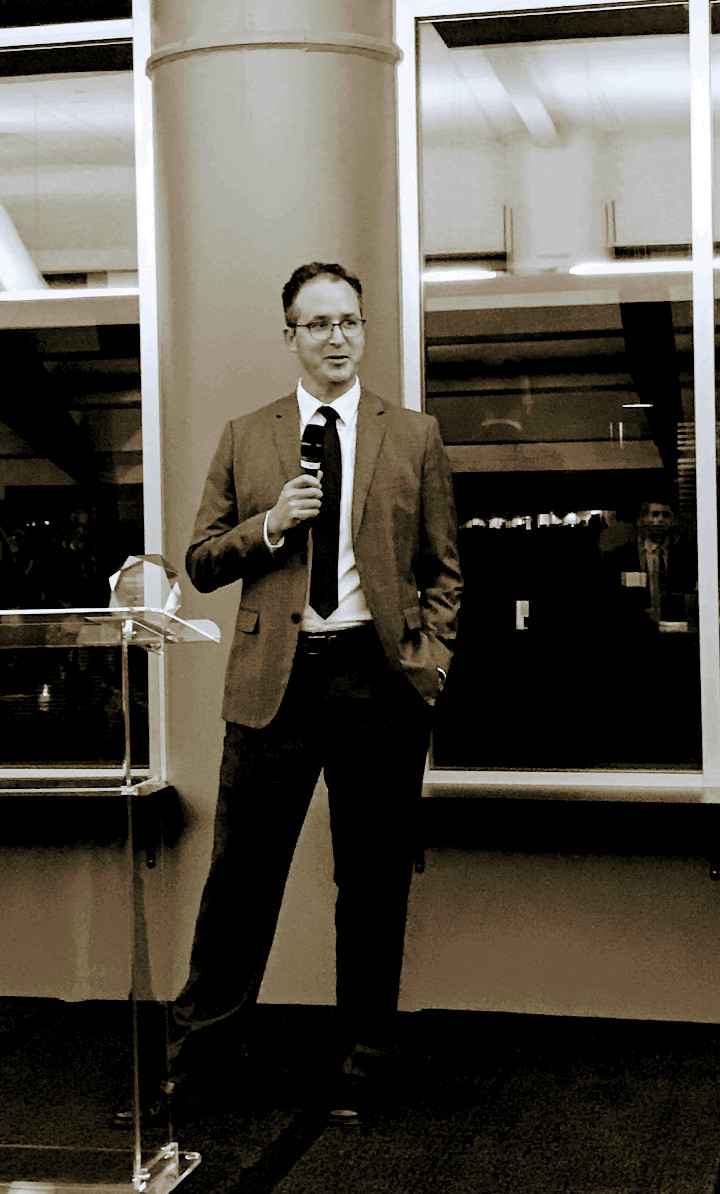 The Inventor of the Year Awards
The Inventor of the Year Awards honor outstanding UW research scientists whose innovations have had a major, positive effect on both healthcare and our local economy.
Congratulation to Prof. Posner for this achievement!
Congrats!
Charlie worked with Megan Cartwright and Prof. Kavanagh (UW-Nanotoxicology Center) to show the oxidative stress and pulmonary inflammatory responses of carbon nanotubes-Link
Congratulations to Mark Borysiak for defending his thesis and completing all requirements for his PhD.
Each year, a panel of ChemE grad students invites a distinguished group of postdoctoral researchers and graduate students selected from the large pool of national applicants to visit Seattle to present their research at the department's summer seminar. Mark will be
presenting his work on point-of-care HIV-1 diagnostic: 15-minute nucleic acid extraction and amplification from whole blood using electrokinetic paper substrates–link.
The competitive CoMotion Mary Gates Innovation Scholars summer internship program offers selected students an opportunity to participate in work with faculty-led UW Startup initiatives.
Congrats !!
Congrats!!
Congrats!!
Congrats!
Congrats!!
Congrats!!
As lab-on-a-chip health diagnostic technologies mature, there is a push to translate them from the laboratory to the clinic. For these diagnostics to achieve maximum impact on patient care, scientists and engineers developing the tests should understand the analytical and clinical statistical metrics that determine the efficacy of the test. Appreciating and using these metrics will benefit test developers by providing consistent measures to evaluate analytical and clinical test performance, as well as guide the design of tests that will most benefit clinicians and patients–
linkCharlie worked with Leanne M. Gilbertson (University of Pittsburgh) and Julie B. Zimmerman (Yale University) to show the mechanisms of action in shape dependent behavior of CuO nanoparticles and their toxicological responses–link.
Prof. Posner was an associate professor at UW mechanical engineering department with an adjunct appointment at the chemical engineering department since he moved to UW from ASU. Now, he has joint appointments at the mechanical and chemical engineering department–
link.
Congrats!!
Congratulations to Charlie Corredor for defending his thesis and completing all requirements for his PhD.
See the new UW Clean Cookstoves site:
http:\\cleancookstoves.uw.eduCongrats!
Charlie worked with Paul Westerhoff and David Speed to show toxicological characterization of nanoparticles in Chemical Mechanical Planarization (CMP) suspensions used in the Semiconductor Industry.
Congrats!
The catalytic properties of nanoparticles have been leveraged to develop a sensitive and simple colorimetric methodology for detection of metal and oxide nanoparticles in complex media. Image of assay's reaction was selected as the cover image of the journal
ES&T.
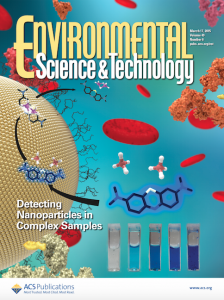
This work was highlighted by NSF via
twitter
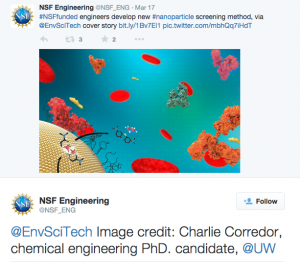
A team led by Jonathan D. Posner, Bryan T. McMinn Endowed Associate Professor at UW, developed a colorimetric assay – similar to a swimming pool test kit – that tests for the presence or absence of nanoparticles in biological and environmental relevant samples with sufficient sensitivity as part per billion concentration levels.
Full article
hereCongrats!
Nucleic acid amplification tests are the
gold standard for many infectious disease
diagnoses due to high sensitivity and specificity, rapid operation, and low limits of detection. Despite the advantages of nucleic acid amplification tests, they currently offer limited point-of-care
(POC) utility due to the need for complex instruments and laborious sample preparation. We report the development of the Nucleic Acid Isotachophoresis LAMP (NAIL)
diagnostic device. NAIL uses isotachophoresis (ITP) and loop-mediated isothermal amplification (LAMP) to
extract and amplify nucleic acids from complex matrices
in less than one hour inside of an integrated chip.
ITP is an
electrokinetic separation technique that uses an electric
field and two buffers to extract and purify nucleic acids in a single step. LAMP amplifies nucleic
acids at constant temperature and produces large
amounts of DNA that can be easily detected. A mobile phone images the amplification results to eliminate the need for laser fluorescent detection. The device requires minimal user intervention because capillary
valves and heated air chambers act as
passive valves and pumps for automated fluid actuation. In this paper, we describe NAIL device design and operation, and demonstrate the extraction and detection of pathogenic E. coli O157:H7 cells from whole milk samples. We use the Clinical and Laboratory Standards Institute (CLSI) limit of detection (LoD) definitions that take into account the variance from both positive and negative samples to properly determine the diagnostic LoD. According to the CLSI definition, the NAIL device has a limit of detection (LoD) of 1,000 CFU/mL for E. coli cells artificially inoculated into whole milk, which is two orders of magnitude improvement to standard tube-LAMP reactions with diluted milk samples and comparable to lab-based methods. The NAIL device potentially offers significant reductions in the complexity and cost of traditional nucleic acid diagnostics for POC applications.
There is a need for new methodologies to quickly assess the presence and reactivity of nanoparticles (NPs) in commercial, environmental, and biological samples since current detection techniques require expensive and complex analytical instrumentation. Here, we investigate a simple and portable colorimetric detection assay that assesses the surface reactivity of NPs, which can be used to detect the presence of NPs, in complex matrices (e.g., environmental waters, serum, urine, and in dissolved organic matter) at as low as part per billion (ppb) or ng/mL concentration levels. Surface redox reactivity is a key emerging property related to potential toxicity of NPs with living cells, and is used in our assays as a key surrogate for the presence of NPs and a first tier analytical strategy towards assessing NP exposures. We detect a wide range of metal (e.g., Ag and Au) and oxide (e.g., CeO2, SiO2, VO2) NPs with a diameter range of 5 to 400 nm and multiple capping agents (tannic acid (TA), polyvinylpyrrolidone (PVP), branched polyethyleneimine (BPEI), polyethylene glycol (PEG)). This method is sufficiently sensitive (ppb levels) to measure concentrations typically used in toxicological studies, and uses inexpensive, commercially available reagents.
Lateral flow immunoassays (LFA) are one of the most prevalent point-of-care (POC) diagnostics due to their simplicity, low cost, and robust operation. A common criticism of LFA tests is that they have poor detection limits compared to analytical techniques, like ELISA, which confines their application as a diagnostic tool. The low detection limit of LFA and associated long equilibration times is due to kinetically limited surface reactions that result from low target concentration. Here we use isotachophoresis (ITP), a powerful electrokinetic preconcentration and separation technique, to focus target analytes into a thin band and transport them to the LFA capture line resulting is a dramatic increase in the surface reaction rate and equilibrium binding. We show that ITP is able to improve limit of detection (LoD) of LFA by 400-fold for 90 second assay time and by 160-fold for a longer 5 minutes time scale. ITP-enhanced LFA (ITP-LF) also shows up to 30% target extraction from 100 µL of the sample, while conventional LFA captures less than 1% of the target. ITP improves LoD of LFA to the level of some lab based immunoassays, such as ELISA, and may provide sufficient analytical sensitivity for application to a broader range of analytes and diseases that require higher sensitivity and lower detection limits.
UW Chemical Engineering has recognized Charlie Corredor with the Faculty Lecture Award. The Faculty Lecture Award is based on the overall scholarly nature and productivity of the student. Charlie gave an award lecture to students and faculty on this work on Environmental and Toxicological Nanotechnology. Charlie has published 11 papers and has an h-index of 8.
UW Chemical Engineering has recognized Mark Borysiak with the ACES Graduate Symposium Award. The Association of Chemical Engineering Graduate Student award is given to the student who gave the top presentation at a recent ACES symposium.
Four primary awards were given out at the event ceremony.
Congratulations to Charlie and Mark!
Congrats!!
Congratulations to Babak Y. Moghadam for defending this thesis and completing all requirements for his PhD.
Paper substrates have been widely used to construct point-of-care lateral flow immunoassays (LFIA) diagnostic devices. Paper based microfluidic devices are robust and relatively simple to operate, compared to channel microfluidic devices, which is perhaps their greatest advantage and the reason they have reached a high level of commercial success. However, paper devices may not be well suited for integrated sample preparation, such as sample extraction and preconcentration, that is required in complex samples with low analyte concentrations. In this study, we investigate integration of isotachophoresis (ITP), an electrokinetic preconcentration and extraction technique, onto nitrocellulose-based paper microfluidic devices in the goal to improve the limit of detection of LFIA. ITP has been largely used in traditional capillary based microfluidic devices as a pre-treatment method to preconcentrate and separate variety of ionic compounds. Our findings show that ITP on nitrocellulose is capable of up to 900 fold increase in initial sample concentration and up to 60% extraction from 100 µL samples and more than 80% extraction from smaller sample volumes. Paper based ITP is challenged by Joule heating and evaporation because it is open to the environment. We achieved high preconcentration by mitigating evaporation induced dispersion using novel cross-shaped device structures that keep the structures hydrated. We show that ITP on nitrocellulose membrane can be powered and run several times by a small button battery suggesting that it could be integrated to a portable point-of-care diagnostic device. These results highlight the potential of ITP to increase sensitivity of paper based LFIA in conditions where small analyte concentrations are present in complex biological samples.
Catalytic bimetallic Janus particles swim by a bipolar electrochemical propulsion mechanism that results from electroosmotic fluid slip around the particle surface. The flow is driven by electrical body forces which are generated from a coupling of a reaction-induced electric field and net charge in the diffuse layer surrounding the particle. This paper presents simulations, scaling, and physical descriptions of the ex- perimentally observed trend that the swimming speed decays rapidly with increasing solution conductivity. The simulations solve the full Poisson-Nernst-Planck-Stokes equations with multiple ionic species, a cylindrical particle in an infinite fluid, and nonlinear Butler-Volmer boundary conditions to represent the electrochemical sur- face reactions. The speed of bimetallic particles is reduced in high-conductivity solutions because of reductions in the induced electric field in the diffuse layer near the rod, the total reaction rate, and the magnitude of the rod zeta potential. This work suggests that the auto-electrophoretic mechanism is inherently susceptible to speed reductions in higher ionic strength solutions.
Styrene-ethylene/butylene-styrene (SEBS) copolymers combine thermoplastic and elastomeric properties to provide microdevices with the advantageous properties of hard thermoplastics and ease of fabrication similar to PDMS. This work describes the electrical surface properties of SEBS block copolymers using current monitoring experiments to determine zeta potential. We show that SEBS exhibits a stable and relatively high zeta potential magnitude compared to similar polymers. The zeta potential of SEBS is stable when stored in air over time, and no significant differences are observed between different batches and devices, demonstrating reproducibility of results. We show zeta potential trends for varying pH and counterion concentration and demonstrate that SEBS has a repeatable surface potential comparable to glass. Oxygen plasma treatment greatly increases the zeta potential magnitude immediately following treatment before undergoing a moderate hydrophobic recovery to a stable zeta potential. SEBS copolymers also offer simple rapid prototyping fabrication and mass production potential. The presented electrokinetic properties combined with simple, low-cost fabrication of microdevices make SEBS a quality material for electrokinetic research and application development.
The Mechanical Engineering Department at the University of Washington’s Seattle Campus seeks to fill a full-time post-doctoral research associate position. The proposed position focuses on efficiency and environmental improvements to biomass cookstove designs for use in East Africa. This position is available through a recently funded grant; more information on this project is available at:
http://www.washington.edu/news/2013/09/11/uw-engineers-get-grant-to-make-cookstoves-10-times-cleaner-for-developing-world/
This project is experimentally intensive, and involves the construction of laboratory prototype combustors, assembly of support equipment for controlling inputs flows to the experiment, and development of sample collection and analysis systems. The principal focus is on the control and characterization of carbonaceous particulate matter from the flames. As such, the position requires the development and operation of sampling, analysis, and characterization equipment for particulate matter from this experiment. Another critical focus is improvement in thermal efficiency. The experimental work will involve the development and testing of alternative designs and configurations to achieve these goals. The successful candidate will demonstrate the ability to work in a collaborative environment with computational modelers and cookstove manufacturers, and will be sensitive to the fact that cultural expectations and constraints will play an important part in any new design.
The successful candidate will:
- • Demonstrate a high level of experimental and hardware skills
- • Collaborate effectively as indicated above to develop innovative concepts for testing
- • Have received a PhD in Mechanical, Aerospace, or Chemical Engineering or related field
- • Publish results in high-impact journals
- • Show evidence of excellent oral and written communication skills
To respond, please send electronically a cover letter, a cv, and the names and contact information for three references to Jonathan Posner at
jposner@uw.edu.
The University of Washington is an affirmative action, equal opportunity employer.
UW Mechanical engineers lead a DOE funded effort to develop cookstoves that are 10 times cleaner for the developing world.
Congratulations to Jeffrey Moran for defending this thesis and completing all requirements for his PhD. Jeff also gave a speech on importance of communicating scientific work at the Mechanical Engineering Graduation ceremony on behalf of the graduate students. We are are proud of you Dr. Moran!
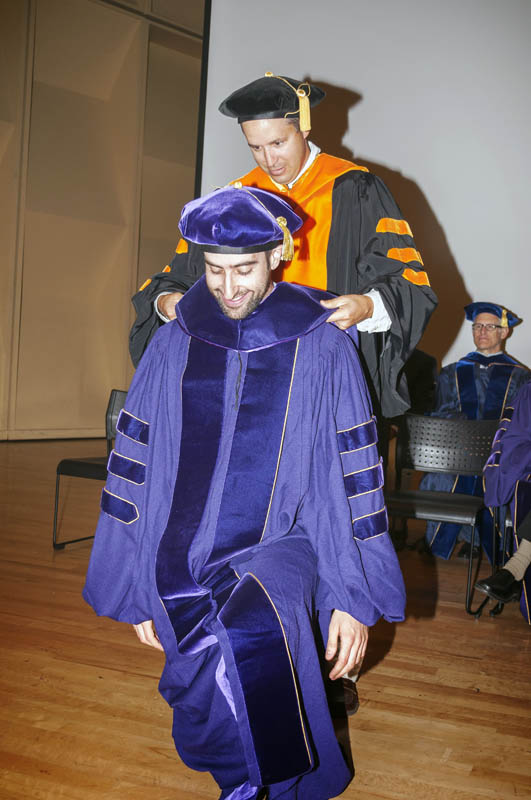
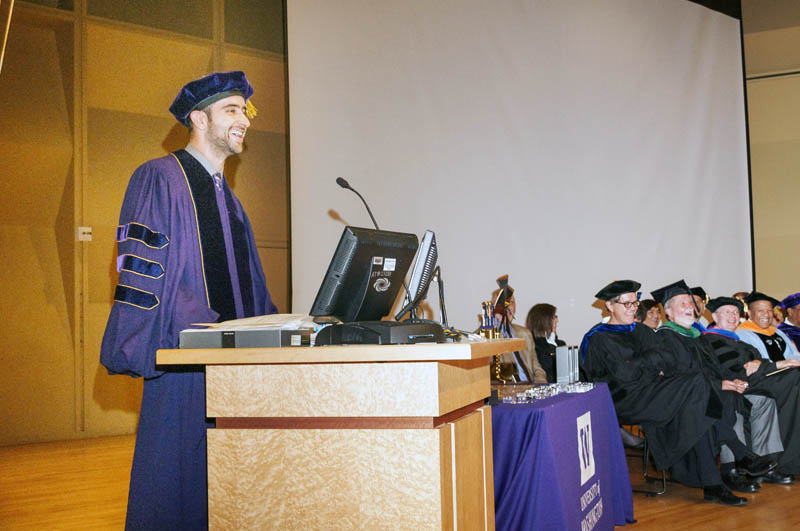
Congrats!!!
Spherical catalytic micromotors fabricated as described in Wheat et al. [Langmuir 26, 13052 (2010)] show fuel concentration dependent translational and rotational velocity. The motors possess short-time and long-time diffusivities that scale with the translational and rotational velocity with respect to fuel concentration. The short-time diffusivities are two to three orders of magnitude larger than the diffusivity of a Brownian sphere of the same size, increase linearly with concentration, and scale as v2/2ω. The measured long-time diffusivities are five times lower than the short-time diffusivities, scale as v2/{2Dr [1 + (ω/Dr )2]}, and exhibit a maximum as a function of concentration. Maximums of effective diffusivity can be achieved when the rotational velocity has a higher order of dependence on the controlling parameter(s), for example fuel concentration, than the translational velocity. A maximum in diffusivity suggests that motors can be separated or concentrated using gradients in fuel concentration. The decrease of diffusivity with time suggests that motors will have a high collision probability in confined spaces and over short times; but will not disperse over relatively long distances and times. The combination of concentration dependent diffusive time scales and nonmonotonic diffusivity of circle-swimming motors suggests that we can expect complex particle responses in confined geometries and in spatially dependent fuel concentration gradients.
In this work, we introduce a simple solvent-assisted micromolding technique for the fabrication of high-fidelity styrene-ethylene/butylene-styrene (SEBS) microfluidic devices with high polystyrene (PS) content (42 wt% PS, SEBS42). SEBS triblock copolymers are styrenic thermoplastic elastomers that exhibit both glassy thermoplastic and elastomeric properties resulting from their respective hard PS and rubbery ethylene/butylene segments. The PS fraction gives SEBS microdevices many of the appealing properties of pure PS devices, while the elastomeric properties simplify fabrication of the devices, similar to PDMS. SEBS42 devices have wettable, stable surfaces (both contact angle and zeta potential) that support cell attachment and proliferation consistent with tissue culture dish substrates, do not adsorb hydrophobic molecules, and have high bond strength to wide range of substrates (glass, PS, SEBS). Furthermore, SEBS42 devices are mechanically robust, thermally stable, as well as exhibit low auto-fluorescence and high transmissivity. We characterize SEBS42 surface properties by contact angle measurements, cell culture studies, zeta potential measurements, and the adsorption of hydrophobic molecules. The PS surface composition of SEBS microdevices cast on different substrates is determined by time-of-flight secondary ion mass spectrometry (ToF-SIMS). The attractive SEBS42 material properties, coupled with the simple fabrication method, make SEBS42 a quality substrate for microfluidic applications where the properties of PS are desired but the ease of PDMS micromolding is favoured.
Carbon nanotubes (CNTs) have one of the highest production volumes among carbonaceous engineered nanoparticles (ENPs) worldwide and are have potential uses in applications including biomedicine, nanocomposites, and energy conversion. However, CNTs possible widespread usage and associated likelihood for biological exposures have driven concerns regarding their nanotoxicity and ecological impact. In this work, we probe the responses of planar suspended lipid bilayer membranes, used as model cell membranes, to functionalized multi-walled carbon nanotubes (MWCNT), CdSe/ZnS quantum dots, and a control organic compound, melittin, using an electrophysiological measurement platform. The electrophysiological measurements show that MWCNTs in a concentration range of 1.6–12 ppm disrupt lipid membranes by inducing significant transmembrane current fluxes, which suggest that MWCNTs insert and traverse the lipid bilayer membrane, forming transmembrane carbon nanotubes channels that allow the transport of ions. This paper demonstrates a direct measurement of ion migration across lipid bilayers induced by CNTs. Electrophysiological measurements can provide unique insights into the lipid bilayer–ENPs interactions and have the potential to serve as a preliminary screening tool for nanotoxicity.
http://authors.elsevier.com/sd/article/S0008622313002765Congrats !!
This competitive award is intended to enhance undergraduate education at the University of Washington by providing you support while undergrad students are engaged in research with a faculty member.
http://www.washington.edu/uaa/mge/apply/research/index.htm
William Walker's image of a liposome and its interaction with engineered nanomaterials was selected as the cover image of the journal Langmuir. Babak Moghadam's work was featured on the cover. Congrats William.
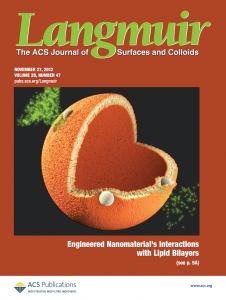
Steve worked with Jaime Raben and Pavlos Vlachos to show that using robust phase correlation improves the accuracy of determining particle displacement over cross-correlation and confocal imaging.
Babak Moghadam,Wen-Che Hou, and Charlie Corredor coauthored a paper on the disruption of artificial cell membranes by engineered nano particles. The article is published in Langmuir and will appear in print in August and can be viewed
here.
Jonathan Posner published a paper with Carlos Perez (group alumni) and Juan Santiago in PNAS. The paper reports on chaos in electrically driven microflows. Read the full
paperThis award recognized the efforts to advance sustainable solutions, awareness, and innovation in global health.
Charlie is a proud alumni of CUNY and was highlighted for his accomplishments on their
website.
Congrats Steve (now at Intel, Chandler AZ) and Jeff on publication of your work in MS&T on three component velocimetry in micro flows.
Congratulations to Charlie for this recognition of your excellence in academics and research.
A research team has succeeded in remotely manipulating metal nanoparticles to lift, drag and release cargo in water.......
Read more We published a paper with the
Santos Biomechatronics group at ASU on a flexible tactile sensor that uses microfluidic channels filled with a liquid metal. Robotic applications often require robust tactile sensing capabilities on curved surfaces, such as artificial fingertips. Flexible tactile sensors could be conformally wrapped around curved digits and could enhance grip by cushioning impacts and increasing the effective contact area during grasp. Flexible microfabricated devices that use thin film or solid electrical components are susceptible to failure due to cracking and fatigue. Conductive fluids have been used as transduction media, electrical connections, and bend sensors. In this work, a flexible and multilayer capacitive microfluidic normal force sensor is developed with a 5x5 taxel array. The sensor uses liquid metal-filled microfluidic channels as the capacitive plates and conductive interconnects. The sensor is microfabricated using soft lithography microfabrication techniques and consists of multiple layers of PDMS microchannels filled with the liquid metal alloy Galinstan and air pockets that modify the mechanical and electrical properties of the sensor. A single taxel is calibrated for normal forces ranging from 0-2.5 N and is shown to provide repeatable measurements of uniaxial loads. The sensor prototype has a spatial resolution on the order of 0.5 mm and performs reliably even when wrapped around a curved surface. The deformable liquid capacitive plates and heterogeneous PDMS-air dielectric medium can be designed to tune the sensor’s sensitivity and range. The sensor prototype provides greater sensitivity at low loads, a feature which can be exploited for robotic applications in which light touch is important.
http://www.cheme.washington.edu/graduate_students/our_grads/corredor.html
Lipid bilayers are biomembranes common to cellular life and constitute a continuous barrier between cells and their environment. Understanding the interaction of nanoparticles with lipid bilayers is an important step toward predicting subsequent biological effects. In this study, we assessed the affinity of functionalized gold nanoparticles (Au NPs) with sizes from 5 to 100 nm to lipid bilayers by determining the Au NP distribution between aqueous electrolytes and lipid bilayers. The Au NP distribution to lipid bilayers reached an apparent steady state in 24 h with smaller Au NPs distributing onto lipid bilayers more rapidly than larger ones. Au NPs distributed to lipid bilayers to a larger extent at lower pH. Tannic acid-functionalized Au NPs exhibited greater distribution to lipid bilayers than polyvinylpyrrolidone-functionalized Au NPs of the same size. Across the various Au NP sizes, we measure the lipid bilayer-water distribution coefficient (Klipw = Clip/Cw) as 450 L/kg lipid, which is independent of dosimetric units. This work suggests that the nanoparticle-cell membrane interaction is dependent on solution chemistry and nanoparticle surface functionality. The Klipw value may be used to predict the affinity of spherical Au NPs across a certain size range toward lipid membranes.
Jonathan Posner and
Shelley Anna, Carnegie Mellon University, were elected by the conference attendees to organize the 2015 microfluidics GRC meeting. The invited speakers and GRC location are TBD.
Jonathan Posner gave an invited talk and Jeff Moran presented a poster at the
microfluidics GRC in Waterville Valley, NH. They both presented work on electrokinetic locomotion of catalytic nanomotors.
http://cheme.stanford.edu/events/colloquia.html
http://engineering.asu.edu/news/8470
http://www.piv.usu.edu/PIV_Uncertainty_Workshop.html
Mike and Kamil's paper shows that electroosmotic pumps fabricated in cylindrical geometry and soft, gas permeable membranes exhibit great stability and pumping power per package than standard linear pumps.
The Ford Foundation Fellowship is sponsored by the Ford Foundation and administered by the National Research Council of the National Academies. This is a prestigious award that reflects the National Academies review panelists’ judgment of Charlie's scholarly competence as well as the promise that he shows for future achievement as a scholar, researcher, and teacher in an institution of higher education.
Congrats Charlie!
The ASU Graduate College provides University Graduate Fellowships to facilitate the recruitment and completion of the most diverse and high quality PhD students. Congrats guys!
Congrats to Philip Wheat and his family. Philip successfully defended his dissertation entitled "Collective behavior of swimming bimetallic motors in chemical concentration gradients."
Our group is partially funded by the SRC/Sematech funded ERC at University of Arizona. Our project focuses on the environmental and health and safety of engineered nanomaterials. Wen-che, Charlie and Babak are presenting our work on using artificial cell membranes for predicting the bioaccumulation and toxicity potential of engineered nanomaterials.
The ARCS Foundation was founded in 1958 in Los Angeles, California, in response to the launch of the first satellite in space, the Russian Sputnik. Our founders became aware of the need to support the education of American scientists in order to become competitive in the field of technology. The ARCS Foundation is a nonprofit organization composed of professional and nonprofessional members who volunteer their services. With pride, ARCS chapters are now located in Atlanta, Chicago, Denver, Honolulu, Los Angeles, Lubbock, Metropolitan Washington, Northern California, Orange County, Phoenix, Pittsburgh, Portland, San Diego and Seattle.
The ARCS Phoenix Chapter, currently with 79 Active, Associate and Life Members, has awarded $3,544,400 in scholarship monies from 1975-2008 to 626 scholars from our three major universities. All chapters nationwide have awarded $66,342,962 to 12,084 scholars from 1958-2008.
A student receiving a scholarship must have a high scholastic record, proven ability in a scientific field, and be a citizen of the United States. Phoenix ARCS scholarships provide the recipients with $7,000 each for one year.
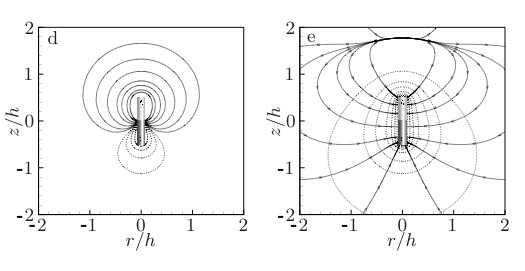
Abstract:
Mitchell originally proposed that an asymmetric ion flux across an organism’s membrane could generate electric fields that drive locomotion. Although this locomotion mechanism was later rejected for some species of bacteria, engineered Janus particles have been realized that can swim due to ion fluxes generated by asymmetric electrochemical reactions. Here we present governing equations, scaling analyses, and numerical simulations that describe the motion of bimetallic rod-shaped motors in hydrogen peroxide solutions due to reaction-induced charge auto-electrophoresis. The coupled Poisson-Nernst-Planck-Stokes equations are numerically solved using the Frumkin-corrected Butler-Volmer equations to represent electrochemical reactions at the rod surface. Our simulations show strong agreement with the scaling analysis and experiments. The analysis shows that electroki- netic locomotion results from electroosmotic fluid slip around the nanomotor surface. The electroviscous flow is driven by electrical body forces which are generated from a coupling of a reaction-induced dipolar charge density distribution and the electric field it creates. The magnitude of the electroviscous velocity increases quadratically with the surface reaction rate for an uncharged motor, and linearly when the motor supports a finite surface charge.
It is no surprise that the world of nanoscale science and engineering (NSE) is expanding at a very fast rate given the efforts being made to improve human health, clean up the environment, and provide security, among other initiatives. Challenges also arise in understanding and appreciating how the intended and unintended consequences of such NSE research affect the broader society.
As a result of this deep appreciation for both NSE research and its societal implications, Jeff will be a part of a unique, collaborative experience that integrates engineering with the social sciences and humanities. Mr. Moran is the 2011 Ira A. Fulton Schools of Engineering and the Center for Nanotechnology in Society at ASU (CNS) “CNS-FSE Fellow.”
The purpose of this program is to train students to work in cross-functional teams toward real-world outcomes. CNS-FSE Fellows develop unique research and participate in CNS-sponsored curricular and co-curricular activities, including outreach, special courses, seminars, science cafes, and other opportunities.
John Anderson is giving this year's distinguished lecture in Mechanical Engineering. Prof. Anderson is President of Illinois Institute of Technology and has many numerous contributions to electrokinetics, colloidal science, membrane science, and transport phenomena.
Charlie presented a poster on his research on interaction of engineered nanomaterials with artificial cell membranes at the annual More Graduate Education (MGE) at Mountain States Alliance (MSE) conference.
Jeff Moran and Philip Wheat publish paper on electrokinetic locomotion in Physical Review E. Bimetallic rod-shaped nanomotors swim autonomously in hydrogen peroxide solutions. Here we present a scaling analysis, computational simulations, and experimental data that show that the nanomotor locomotion is driven by fluid slip around the nanomotor surface due to electrical body forces. The body forces are generated by a coupling of charge density and electric fields induced by electrochemical reactions occurring on the nanomotor surface. We describe the dependence of nanomotor motion on the nanomotor surface potential and reaction-driven flux.
Abstract: A membraneless microfluidic fuel cell stack architecture is presented that reuses reactants from one cell to a subsequent one, analogous to PEMFC stacks. On-chip reactant reuse improves fuel utilization and power densities relative to single cells. The reactants flow separately through porous electrodes and interface with a non-reacting and conductive electrolyte which maintains their separation. The reactants remain separated downstream of the interface and are used in subsequent downstream cells. This fuel cell uses porous carbon for electrocatalysts and vanadium redox species as reactants with a sulfuric acid supporting electrolyte. The overall power density of the fuel cell increases with reactant flow rate and decreasing the separating electrolyte flow rate. The peak power, maximum fuel utilization, and efficiency nearly double when electrically connecting the cells in parallel.
Abstract
Portable devices rely on battery systems that contribute largely to the overall device form factor and delay portability due to recharging. Membraneless microfluidic fuel cells are considered as the next generation of portable power sources for their compatibility with higher energy density reactants. Microfluidic fuel cells are potentially cost effective and robust because they use low Reynolds number flow to maintain fuel and oxidant separation instead of ion exchange membranes. However, membraneless fuel cells suffer from poor efficiency due to poor mass transport and Ohmic losses. Current microfluidic fuel cell designs suffer from reactant cross-diffusion and thick boundary layers at the electrode surfaces, which result in a compromise between the cell’s power output and fuel utilization.
This dissertation presents novel flow field architectures aimed at alleviating the mass transport limitations. The first architecture provides a reactant interface where the reactant diffusive concentration gradients are aligned with the bulk flow, mitigating reactant mixing through diffusion and thus crossover. This cell also uses porous electro-catalysts to improve electrode mass transport which results in higher extraction of reactant energy. The second architecture uses porous electrodes and an inert conductive electrolyte stream between the reactants to enhance the interfacial electrical conductivity and maintain complete reactant separation. This design is stacked hydrodynamically and electrically, analogous to membrane based systems, providing increased reactant utilization and power. These fuel cell architectures decouple the fuel cell’s power output from its fuel utilization.
The fuel cells are tested over a wide range of conditions including variation of the loads, reactant concentrations, background electrolytes, flow rates, and fuel cell geometries. These experiments show that increasing the fuel cell power output is accomplished by increasing reactant flow rates, electrolyte conductivity, and ionic exchange areas, and by decreasing the spacing between the electrodes. The experimental and theoretical observations presented in this dissertation will aid in the future design and commercialization of a new portable power source, which has the desired attributes of high power output per weight and volume and instant rechargeability.
Steve Klein publishes paper in Measurement Science and Technology on "Improvement in two-frame correlations by confocal microscopy for temporally resolved micro particle imaging
velocimetry".
doi:10.1088/0957-0233/21/10/105409
Abstract
An investigation of two-frame micro particle image velocimetry (?PIV) correlations is
presented that utilizes a high-speed, spinning disk confocal micro particle image velocimetry
(SD?PIV) system. The system uses Nipkow disk confocal epifluorescence microscopy and a
high-speed camera to capture unsteady microscale flows using two-frame cross correlations.
In ?PIV, ensemble averaging is often used to reduce errors due to noise from out-of-focus
particles. However, unsteady non-periodic flows require two-frame correlations which can be
difficult to achieve with acceptable accuracy using ?PIV. The confocal microscope uses
pinhole spatial filtering to remove much of the light originating from outside the focal plane,
reducing light from out-of-focus particles and improving the accuracy of two-frame cross
correlation ?PIV. Improvements to two-frame PIV correlations provided by the confocal
system are evaluated using the correlation peak signal to noise ratio and universal outlier
detection in steady Poiseuille flow as a function of particle volume fraction and focal depth into
the channel. We find that the confocal system increases the mean correlation signal to noise
ratio for all cases and reduces the fraction of erroneous vectors under conditions where there is
a large number of out-of-focus particles. Time-resolved high-speed PIV is demonstrated
through the measurement of an example unsteady flow created by an electrokinetic
instability.
Abstract:
Water and energy are inextricably linked. Water is required by nearly all-living
organisms as well many modern industrial processes including the generation of energy. Energy is used to treat and transport water and water is produced from hydrogen and fossil fuel reactions as well as used for cooling for thermoelectric power generation. In this way, energy contains embedded water and water contains embedded energy.
This primary goal of this dissertation is to answer the questions: Can water embedded in energy be recovered?; and, Is the water of high quality and of considerable quantity? This dissertation investigates the quality and quantity of water produced from fuel cells, internal combustion engines (ICE), and cooling towers. The quality of the recovered water is analyzed and compared to the standards established by the World Health Organization (WHO) and US Environmental Protection Agency (EPA).
Water is collected from a lab scale (10 W) PEM fuel cell, a commercial alternative power unit (1 kW) PEM fuel cell, and a commercial scale (250 kW) molten carbonate fuel cell. The results indicate that water produced by PEM fuel cells is good quality according to the EPA standards and WHO guidelines for drinking water, although some treatment to reduce nickel and aluminum content is needed. Collection efficiency up to 70% was obtained from the lab scale PEM fuel cell. While the commercial unit PEM fuel cell produced in average 0.036 L/kWh which is about 21% of a typical house requirement. Water produced by the MCFC does not comply with the drinking water standards recommended by EPA and WHO due to nitrite, nickel, and manganese concentrations.
Water from exhaust of a hydrogen, a natural gas, and two gasoline ICEs was also recovered and analyzed. The trace organic analysis data on the water collected from one of the gasoline engines suggests that water require extensive treatment to remove some of the potentially harmful organic constituents.
Additionally water samples from two different wet cooling towers have been collected and analyzed. The water samples obtained from the saturated air exiting cooling towers suggest that this water is good quality.
Kamil Salloum was selected as 2006 Fulton Fellow. Fulton fellowships are designed to recruit and retain high quality doctoral students at ASU. Kamil will work under Jonathan Posner on topics related to membrane-less fuel cells and relating cell mechanical properties to disease.
Philip Wheat was selected as 2006 Fulton Fellow. Fulton fellowships are designed to recruit and retain high quality doctoral students at ASU. Philip will work under Jonathan Posner on topics related to electrokinetic transport in microchannels and hybrid biomolecular -silicon biosensors.
Abhishek Jain, Guru Navaneethum, and Philip Wheat present at the 2006 Research in Engineering and Applied Sciences Symposium which is being held at ASU. Guru will present his experimental work on electrokinetics in non-dilute suspensions. Abhishek will present his work on hydrodynamic particle separations in microfluidic channels. Philip will present his work on quantification of mixing by electrokinetic instabilities.
The Division of Fluid Dynamics of the American Physical Society selected Ph.D. student Philip Wheat as a travel award recipient for the 2006 annual meeting. Philip will be presenting his work on "Quantification of Electrokinetic Micromixing using Ion-indicating Dyes."
Steven Klein was selected for the Fulton Undergraduate Research Initiative (FURI). The FURI program is focused on cultivating excellence in engineering undergraduate research. Steve will be developing giga-Ohm electrical isolators using PDMS soft lithography. His work is related to electrical isolation for protein ion-channel biosensors.
Jonathan Posner gave an invited talk in the Micromixing Symposium at the 15th U.S. National Congress on Theoretical and Applied Mechanics on the "Quantification Of Convective Electrokinetic Instability Micromixing using Ion Indicating Dyes" in Boulder CO
Jonathan Posner spoke about "Leveraging Microscale Transport for Advancements in Health, Energy, and Sustainability" at the Research in Engineering and Applied Sciences Symposium.

 The RESTRICT assay is inspired by the mechanism of action of antiretroviral drugs and infers drugs levels from the extent of DNA synthesis by HIV reverse transcriptase enzyme (see figure above). RESTRICT is a user-friendly and inexpensive way for rapid (< 1 hour) measurement of long-term drug levels for people receiving medication for HIV treatment or prevention. The RESTRICT assay could be a useful for patients and healthcare providers to measure drug levels during a typical visit and receive feedback that might help to prevent treatment failure.
The manuscript is now available online on the ACS Sensors webpage here: https://doi.org/10.1021/acssensors.9b02198. A PDF is also available on our publications page here: http://posner.uw.edu/publications/.
The RESTRICT assay is inspired by the mechanism of action of antiretroviral drugs and infers drugs levels from the extent of DNA synthesis by HIV reverse transcriptase enzyme (see figure above). RESTRICT is a user-friendly and inexpensive way for rapid (< 1 hour) measurement of long-term drug levels for people receiving medication for HIV treatment or prevention. The RESTRICT assay could be a useful for patients and healthcare providers to measure drug levels during a typical visit and receive feedback that might help to prevent treatment failure.
The manuscript is now available online on the ACS Sensors webpage here: https://doi.org/10.1021/acssensors.9b02198. A PDF is also available on our publications page here: http://posner.uw.edu/publications/.
 The Inventor of the Year Awards honor outstanding UW research scientists whose innovations have had a major, positive effect on both healthcare and our local economy.
Congratulation to Prof. Posner for this achievement!
The Inventor of the Year Awards honor outstanding UW research scientists whose innovations have had a major, positive effect on both healthcare and our local economy.
Congratulation to Prof. Posner for this achievement!
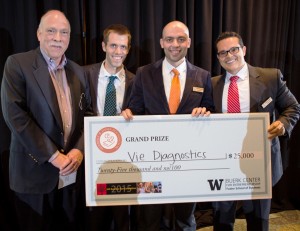
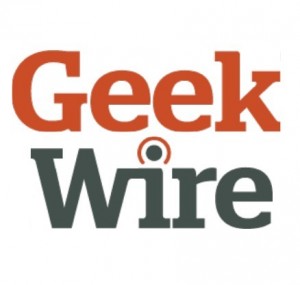 Maker of sexually transmitted disease test wins UW business plan competition
Maker of sexually transmitted disease test wins UW business plan competition
 UW team develops 10-minute test for STD checks
UW team develops 10-minute test for STD checks
 This work was highlighted by NSF via twitter
This work was highlighted by NSF via twitter








